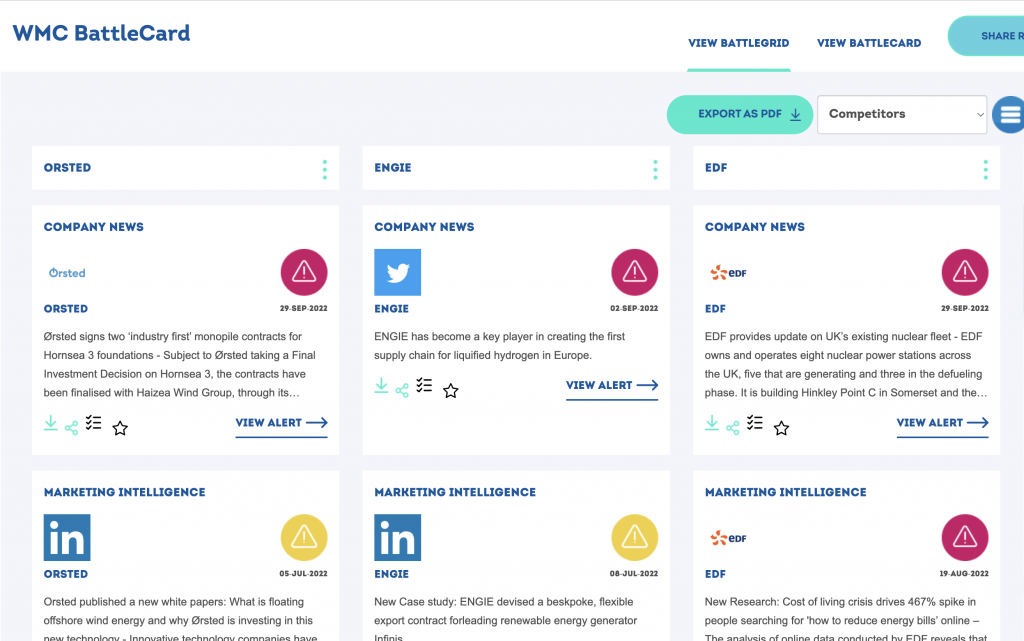A product manager roadmap is the cornerstone of a product’s journey in the landscape of development. It extends beyond a mere feature list, serving as a comprehensive blueprint outlining a product’s vision, trajectory, priorities and evolutionary path.
This strategic document doesn’t just communicate short-term goals but also paints the long-term picture for everyone involved in the product’s development.

Understanding A Product Manager Roadmap
A product manager roadmap is the guiding framework in the realm of product development. It is more than a static document; rather, it represents the heart and soul of the product, encompassing its core identity, target audience and overarching aspirations.
Beyond being a mere set of guidelines, it serves a critical role in fostering transparency and coherence throughout the product development journey.
The primary function of the product manager roadmap is not merely to delineate tasks but to cultivate a shared understanding and alignment across diverse teams.
By presenting a comprehensive overview of the product’s objectives and direction, it acts to guide various stakeholders towards a unified vision.
This roadmap operates as a communication hub, ensuring that everyone involved comprehends the product’s essence, its intended audience, and the monumental goals it strives to achieve. It bridges the gap between ideation and execution, painting a picture of the product’s purpose and significance.
Moreover, this roadmap serves as a cohesive force, aligning teams towards a common mission. It breaks down silos between departments, fostering collaboration and synergy across engineering, design, marketing and other involved domains.
Through this alignment, it cultivates a shared sense of ownership, empowering every team member to contribute meaningfully towards the product’s success.
A Product Manager Roadmap: The Key Components
1) Vision
The vision section within a product manager roadmap acts as the compass guiding the product’s journey. It transcends mere words, painting a vivid picture of the product’s ultimate aspirations and intended future state. This segment encapsulates the grand objectives, overarching strategies and the transformative impact the product aims to achieve.
2) Goals
The backbone of the roadmap lies within its goals—Specific, Measurable, Achievable, Relevant, and Time-bound (SMART). These goals are the cornerstones upon which the product’s success is built. Each goal is crafted to be precise, quantifiable, attainable, relevant to the overarching objectives, and bounded by a defined timeframe.
They serve as navigational waypoints, providing direction and milestones for progress evaluation. Clear and well-defined goals not only drive the team’s efforts but also facilitate effective measurement of progress and success.
3) Prioritisation
Prioritising initiatives is the strategic engine that propels a product manager roadmap towards success. This section evaluates and ranks initiatives based on their potential impact on the objectives and user needs.
It’s a process that goes beyond mere categorisation—it’s a deliberate act of allocating resources and efforts to initiatives that align most closely with the overarching vision. Prioritisation ensures optimal utilisation of resources, time and manpower, ensuring that the team focuses on initiatives that drive the most significant impact toward fulfilling the product’s goals.
4) Timelines
Realistic timelines within a product manager roadmap are the foundation of effective planning and execution. They set the rhythm for the product’s development, managing expectations and synchronising efforts within achievable timeframes. These timelines serve as guardrails, preventing the project from veering off-course and ensuring a focused and disciplined approach.
Realism in setting timelines is crucial; they balance ambition with practicality, providing a clear roadmap for the team’s activities and allowing for informed decision-making when adjusting plans to meet evolving needs.
5) Feedback mechanisms
Continuous feedback loops form the adaptive core of a product manager roadmap. They establish channels for collecting, processing, and integrating feedback from various sources—be it users, stakeholders or market conditions.
These mechanisms ensure that the roadmap remains dynamic and responsive to changes in market landscapes and evolving user requirements. By fostering adaptability, feedback mechanisms enable the roadmap to evolve alongside the product’s journey, enhancing its relevance and resonance in meeting user needs and market demands.
How Competitive Intelligence Platforms Fit In?
Competitive intelligence platforms play a pivotal role in shaping the foundation of an effective product manager roadmap. These platforms serve as invaluable repositories of insights into the market landscape, competitors’ strategies, evolving trends, and nuanced customer preferences.
Their role extends far beyond a mere data source; they are catalysts that empower product managers to navigate the complex terrain of the market with precision and strategy.
By leveraging competitive intelligence platforms, product managers gain access to a treasure trove of information that is fundamental for informed decision-making. These platforms provide comprehensive data on competitors, offering insights into their product offerings, market positioning, and strategic moves.
Understanding these elements enables product managers to not only gauge their competitive standing but also identify gaps and opportunities within the market.
Moreover, these platforms serve as a window into the evolving trends and preferences of the target audience. They provide valuable analytics and trends, shedding light on consumer behaviour, preferences and emerging market demands. Armed with this knowledge, product managers can tailor their roadmap to align more effectively with the dynamic needs of their audience, ensuring relevance and resonance.
The insights derived from competitive intelligence platforms form the bedrock for product differentiation. Understanding how competitors position themselves in the market landscape helps product managers carve out a unique value proposition. It enables them to identify areas where their product can stand out, offering something distinctive that resonates with their audience.
Creating An Effective Product Manager Roadmap
Developing a robust roadmap involves an iterative process rooted in collaboration, continual evaluation and adaptability:
1) Gather data
Integrating insights from user research, market analysis and competitive intelligence platforms ensures a well-informed, data-driven approach.
2) Define goals
Clear and measurable objectives aligned with the product’s overarching vision guide the roadmap, ensuring a cohesive approach towards common objectives.
3) Prioritise initiatives
Evaluating and prioritising features based on their impact and market trends facilitates optimal resource utilisation and task prioritisation.
4) Set Timelines
Establishing achievable timelines, considering dependencies and resources, facilitates effective planning and execution.
5) Establish feedback mechanisms
Implementing adaptable feedback loops ensures continuous integration of user input and market dynamics into the roadmap.
6) Regularly review & adapt
Consistent review and refinement based on new data and market dynamics ensure the roadmap remains aligned with evolving needs. Ideally, your roadmap should be reviewed at least once every quarter.
Implementing & Monitoring Your Roadmap
Effective implementation and monitoring are essential for achieving the roadmap’s objectives:
Effective communication: Transparent communication ensures alignment among stakeholders, fostering a shared understanding of objectives and expectations.
Engage the team: Active involvement of the team cultivates ownership and commitment, encouraging proactive participation and problem-solving.
Track progress: Regular monitoring and assessment against milestones enable prompt identification of deviations, allowing adjustments to ensure goal attainment.
Incorporate competitive intelligence: Leveraging competitive intelligence data aids in seizing opportunities and staying ahead in the market, facilitating informed adjustments to strategies.
Embrace feedback: Continuous integration of user feedback ensures the product remains relevant and aligned with evolving user needs and preferences.
Concluding Thoughts
A product manager roadmap isn’t merely a plan. It’s the strategic driver that guides a product’s journey towards success. It unifies teams, directs decisions, and ensures the product remains relevant and competitive in a dynamic market. Embracing this roadmap fosters innovation and goal attainment, steering the product towards fulfilling its objectives and satisfying user needs effectively.


